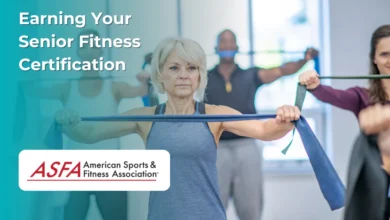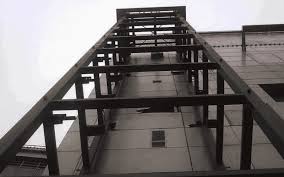Style Meets Function: Effortless Looks for Real Life
In a world where to-do lists stretch longer than your lunch break and comfort often battles style, choosing the right outfit becomes more than just a matter of taste. It’s a question of function. Can you move in it? Does it breathe? Will it transition from the grocery store to dinner without looking out of place?
Style and utility don’t have to be opposing forces. In fact, the smartest wardrobes are built on that very blend—fashion that looks good and works just as hard as you do.
Dressing for Real Life, Not the Runway
Let’s face it: most of us aren’t walking red carpets or sipping espressos in curated streetwear. We’re commuting, parenting, working, running errands, or juggling all four. That means our clothing needs to serve multiple purposes—comfort, movement, practicality—without losing visual appeal.
Too often, fashion trends prioritize aesthetics without considering how clothes feel on the body or behave throughout the day. That leather pencil skirt might look stunning at 8 a.m., but by 2 p.m., it’s a regret wrapped around your thighs.
Real-life style isn’t about compromise. It’s about choosing pieces that enhance your day instead of disrupting it.
Key Elements of Practical Style
Blending fashion with function doesn’t mean giving up personality. It means making smarter choices. Here are the features that truly matter:
1. Breathable Fabrics
Clothing that traps heat or clings to sweat is a dealbreaker. Look for natural fibers like cotton, bamboo, or blends designed to wick moisture. These fabrics help regulate temperature, keep you feeling fresh, and prevent that awkward mid-day stickiness that synthetic fabrics often cause.
2. Stretch and Flexibility
You shouldn’t feel restricted by what you’re wearing. Whether you’re reaching for the top shelf or sitting through back-to-back meetings, a little elasticity goes a long way. Spandex blends or structured knits offer flexibility without sagging.
3. Pockets That Actually Work
A jacket with mock pockets or a dress with none at all might photograph well—but it’s not useful. Function-forward fashion always includes real, usable storage. You shouldn’t need a separate bag just to carry your essentials.
4. Neutral Base, Layer-Friendly
Versatility is key. Choose base colors—black, white, gray, olive—that can be layered, accessorized, and worn across seasons. These staples act as the backbone of your wardrobe, allowing you to change up your look without constant purchases.
Clothing Categories That Nail the Balance
Some garment types are inherently better at merging practicality with style. Here are a few that consistently hit the sweet spot:
Athleisure Done Right
Once confined to gyms and lazy Sundays, athleisure has become a cornerstone of functional fashion. Think wide-leg joggers in tailored cuts, structured hoodies, and technical tees that wick sweat but look polished enough for lunch.
The Rise of the Athletic Skorts
Skorts have come a long way since the schoolyard. Modern athletic skorts offer built-in shorts for movement with the clean lines of a skirt. They’re breathable, stretchy, and transition seamlessly from dog walks to casual dinners. You can pair them with a half-tucked button-down or a soft, cropped sweatshirt for balance.
And they’re not just a passing trend. Skorts support both comfort and flexibility, qualities that directly influence mobility and body wellness. In fact, Harvard Health Publishing notes that consistent physical activity—even casual daily movement—can benefit both physical and mental performance. Choosing wardrobe items that support ease of movement is a small but meaningful step in that direction.
Utility-Inspired Outerwear
Think chore jackets, field coats, and quilted liners with thoughtful pockets and durable construction. These pieces layer easily, look elevated, and hold their own in unpredictable weather.
Casual Tailoring
Blazers with stretch panels, trousers with elastic waistbands, and tops with built-in structure provide polish without stiffness. This category is perfect for those who need to look professional without sacrificing mobility or comfort.
Building a Wardrobe That Works
A truly functional wardrobe doesn’t rely on volume—it relies on intention. You don’t need 20 pairs of pants to dress well. You need a few that do different jobs.
Here’s how to approach it:
- Start with lifestyle: Are you constantly on the move? Working from home? Traveling? Your closet should reflect your day-to-day, not a fantasy version of your life.
- Invest in multi-taskers: Pieces that serve more than one purpose—like a longline cardigan that works as a robe or outerwear—offer better returns than single-use items.
- Think in outfits, not items: Don’t buy a “nice top” just because it’s cute. Ask yourself: what will I wear this with? How often? Can I dress it up and down?
- Prioritize quality over trend: One well-made jacket will outlast three fast-fashion knockoffs. And it’ll look better doing it.
When Comfort Becomes Confidence
There’s a psychological edge to knowing your clothes can keep up with you. You’re less distracted. You walk taller. You feel prepared. And that’s what functional fashion ultimately offers—not just ease or utility, but confidence.
When what you’re wearing works with your body and your lifestyle, you can focus on the things that matter: your goals, your relationships, your well-being.
Final Thoughts
Fashion that works isn’t about dressing down. It’s about dressing smart. The best outfits blend aesthetics with utility, offering ease without looking lazy. Breathable fabrics, flexible construction, thoughtful details—these elements create looks that feel good and look like they were styled with intention.
If you’re tired of choosing between comfort and style, stop choosing. You can have both. Start with one smart piece—maybe an athletic skort, maybe a utility jacket—and build from there. You’ll be surprised how quickly your closet transforms.
You Many Also read: Buy Hellstar Hoodies-2025


